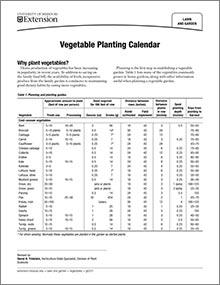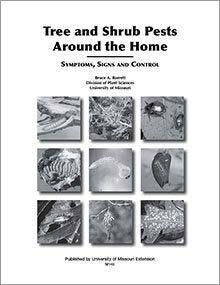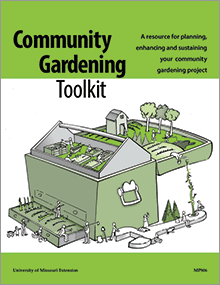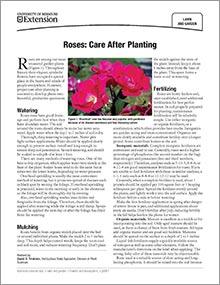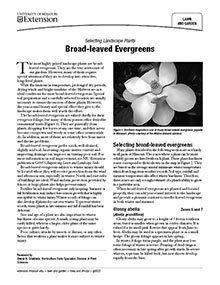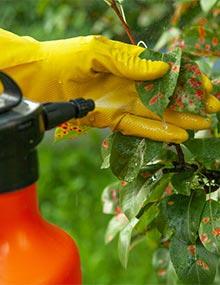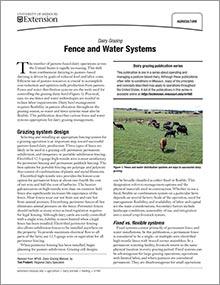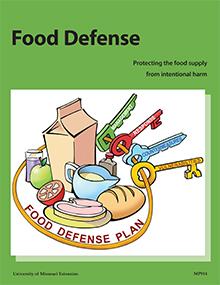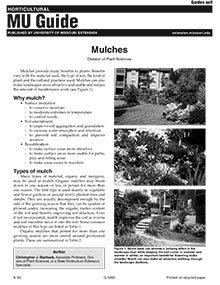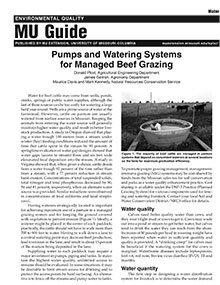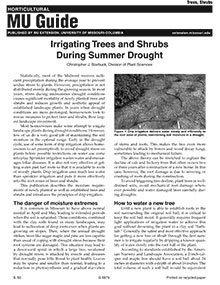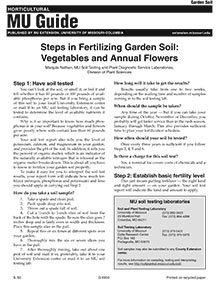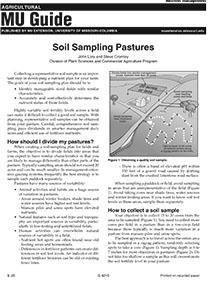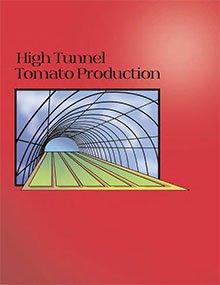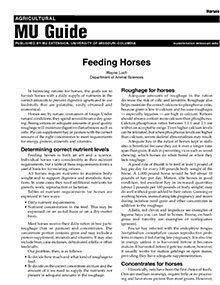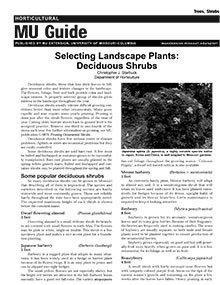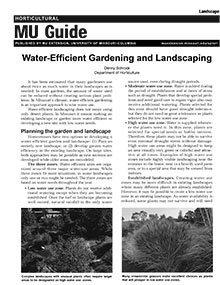The following publications might be of particular interest to people in Webster County. For a complete list of MU Extension publications, visit the main Publications page.
Vegetable Planting Calendar
Reviewed
Plant a vegetable garden to save on your family food bill and promote good dietary habits. The tables in this guide help Missourians plan what to plant, when to plant and how much of each vegetable to plant.
Tree and Shrub Pests Around the Home: Symptoms, Signs and Control
Revised $10
Learn to identify common insect and mite infestation on nearly 100 trees and shrubs and their potential treatments with the help of the University of Missouri Extension publication.
Community Gardening Toolkit
Reviewed
Learn how to plan, start, and maintain a successful community garden with tips on organizing, site selection, funding, and long-term management.
Energy Efficiency and Farm Water Systems
New
Farm water systems are often neglected when it comes to energy efficiency. Although the savings to be realized may not be as great as perhaps energy-efficient lighting, the return can be fairly short for some energy-saving investments. This guide presents some general guidelines regarding farm water systems.
Turfgrass Insects
Revised
Learn to manage turfgrass insect pests through integrated pest management, combining cultural practices with minimal pesticide use.
Roses: Care After Planting
Revised
Planting roses? Learn how to mulch, water, prune, and care for your roses. Includes a pest guide.
Selecting Landscape Plants: Broad-leaved Evergreens
Reviewed
Tips on selecting broad-leaved evergreen plants for your landscape, from ideal soil conditions to winter care, enhancing year-round beauty and structure.
Raised-Bed Gardening
Revised
Raised-bed gardening enhances soil drainage and root health, offers customizable design options and extends the growing season for better yields.
Fruit Spray Schedules for the Homeowner
Revised
This guide provides seasonal spray schedules for common fruits, helping homeowners manage pests and diseases for healthier harvests.
Dairy Grazing: Fence and Water Systems
New
This publication describes various fence and water systems appropriate for dairy grazing management.
Food Defense: Protecting the Food Supply from Intentional Harm
New
Learn about food defense strategies to protect the food supply from intentional harm, including risk assessment, countermeasures, and emergency response plans.
Practical Horse Psychology
Revised
Vegetable Gardening
New $10
Vegetable gardening is a rewarding activity that can provide fresh, flavorful produce. It also offers the benefits of exercise, fresh air and landscape beautification. Learn to grow your own vegetables so you can eat fresh and save on groceries.
Mulches
Revised
Mulch conserves moisture, suppresses weeds, and enhances soil health. Choose materials like pine bark, leaves, or straw for optimal benefits. Apply 2–4 inches to maintain garden vitality.
Pumps and Watering Systems for Managed Beef Grazing
Reviewed
Watering a herd year round can be difficult and costly. Visit our site to learn about Pumps and Watering Systems for Managed Beef Grazing.
Soil Sampling Hayfields and Row Crops
New
Collecting a representative soil sample is an important step in developing a nutrient plan for your farm. Make smarter management decisions and more efficient use of fertilizer nutrients by learning how to plan and take soil samples from your fields in th
Steps in Fertilizing Garden Soil: Vegetables and Annual Flowers
Revised
Learn how to test soil, apply fertilizers, and maintain nutrient levels for healthy vegetable and flower gardens.
Soil Sampling Pastures
New
Collecting a representative soil sample is an important step in developing a nutrient plan for your farm. The goals of your soil sampling plan should be to
Pruning and Care of Shade Trees
Reviewed
Most established shade trees do not need to be pruned regularly. But yearly pruning during the first few years after planting can help a tree become established and develop a strong, attractive structure. Learn when and how to prune and problems you might
High Tunnel Tomato Production
New
Editor's note
The following abstract describes a publication that is only available as a downloadable PDF.
Feeding Horses
Revised
Learn the essentials of feeding horses, including roughage and concentrate recommendations, nutrient needs, and feeding tips for health and performance.
Small Flock Series: Incubation of Poultry
Revised
Learn how to incubate chicken eggs for small flocks or classrooms, covering egg handling, storage, and embryo development stages.
Water-Efficient Gardening and Landscaping
Reviewed
Learn water-saving techniques for gardening, from drought-tolerant plants to efficient irrigation methods, and create a sustainable, beautiful landscape.
